
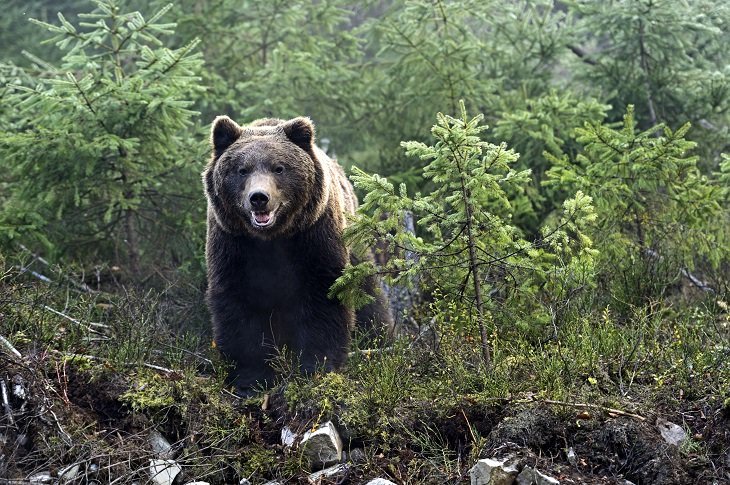
Jared A. Forrester, a surgeon from Stanford University, who led the investigation into fatalities caused by animals in the US from 2008-2015 says that, “Most deaths aren’t actually due to wild animals such as mountain lions, bears, wolves, or sharks. So, while it’s important that people recreating in the wilderness know what to do when they encounter a potentially dangerous animal, the risk of death is quite low.”
So, if wild animals with sharp claws and teeth aren’t the biggest risk to people in the US, then what is?
Well, if you exclude stinging winged insects for a second, the deadliest animals to humans in the US are those that we have living in and around our homes – and our homesteads. Farm animals – mainly cattle and horses – are actually the biggest killers, being responsible for 576 deaths (36% of all fatalities) in the period, claiming an average of 72 deaths per year.
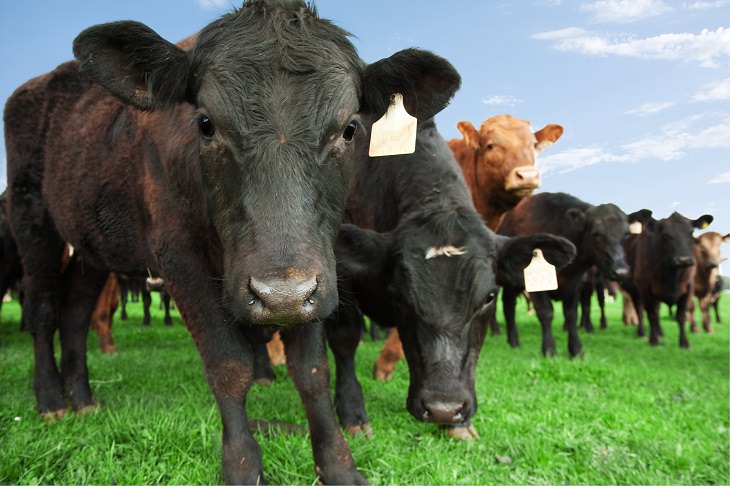
Dogs were responsible for a little less than half that, coming in third overall with 272 deaths.
For such a beloved animal that makes up a valuable part of so many families, dogs’ inclusion on the list ought to be a wake-up call for everyone, especially for parents: children under the age of four are killed at a rate almost two times higher than the next most vulnerable group (people over the age of 65), and four times higher than other age groups.
While dogs can be deadly, they don’t claim as many lives overall as winged venomous insects of the order Hymenoptera – comprising of bees, hornets, and wasps – the second biggest killer in this study. Stings from these flying insects killed 478 people overall during the study period – 6- per year on average.
This might be shocking, but what’s more shocking is this: since the last time the researchers analyzed this kind of data – covering the period 1999-2007 – the cost of some epinephrine autoinjectors have skyrocketed by more than 400%.
This is a huge issue, since these kinds of treatments are what saves the lives of people who are suffering anaphylactic shock brought on by venomous insect stings. “With an estimated 220,000 annual visits to the emergency department and nearly 60 deaths per year due to stings from hornets, wasps, and bees, effective and affordable treatment for anaphylaxis from Hymenoptera is critical,” the researchers write in their paper.
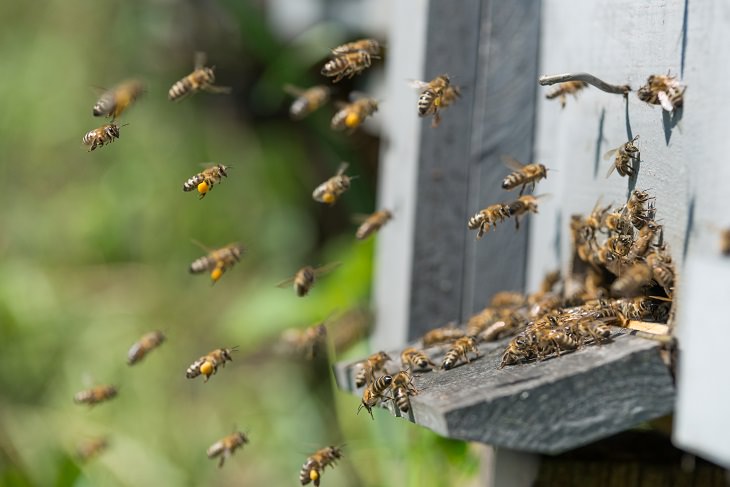
Therefore, “public health practitioners, policymakers, and the public should encourage the industry to provide proven public health interventions, like the EpiPen, at a socially responsible price point that serves the best interest of the US population.”
Another thing that the research team is calling for is greater awareness of the risks animals at large can cause to people in the US. Although deaths due to animals haven’t risen since the researcher’s last study, they haven't declined either. This is not a good thing, as the team believes that most of these fatalities caused by animals should ultimately be preventable.
In the same period in which dogs killed 272 people, 49 people were killed by spiders, 48 lost their lives to snakes, sharks killed 13 people, and scorpions claimed the lives of just two.
Source: sciencealert
Images: depositphotos
 4:26
4:26
Despite Looking Similar, Cats Are MORE Diverse Than Dogs!
Who's more diverse, cats or dogs? This video answers this question once and for all, the it might surprise you...

7 Technologies That Humans Stole from the Animal Kingdom
New inventions are always impressive, but just how original are they? Here are 7 inventions that you thought were all human, but, truth be told, are not...
 1:37
1:37
Whoa! Who Knew this Was the Deadliest Animal in the World?
This video takes a look a look at the animals that are most responsible for human deaths each year. Some of these will surprise you!
 3:08
3:08
This Rescue Video Will Have You at the Edge of Your Seat
Watch as this impressive wild leopard gets stuck in wire and eventually rescued by a professional team.

7 Mind Blowing Science Facts School Left Out
Put on your learning caps! We rounded up 7 surprising scientific facts you probably didn't learn at school.

These 10 New Species Were Only Discovered in 2018!
From creatures the size of office blocks to those that are only visible when viewed under a microscope, the 10 newly-discovered species are wonderful!
 2:29
2:29
CDs Become Magic Tools in This Mind-Bending Act
Watch this mind-bending magic act by Florian Sainvet in America's Got Talent.
 9:23
9:23
Planes Rarely Cross Over the Pacific Ocean, But Why?
Even planes flying directly to Japan from the western US fly all the way through Alaska. Have you even wondered why this is the case?

12 Beautiful Plants That Will Transform Your Windows
Brighten your home with these gorgeous window plants.

Panama Canal: Engineering Miracle with a Shocking History
You may not know it but the Panama Canal is one of the 20th century's greatest achievements. When you read its incredible history you will understand why.

Don’t Say These Words Abroad, You Might Be Misunderstood
These 15 words are all similar to English ones, but they mean something completely different in other languages

15 Photographs That Captured Beautiful Moments in History!
History is filled with strange, profound and beautiful moments and peppered with incredible people, and some were vividly captured on camera!

These Max Shows Will Keep You Glued to Your Screen
Looking for something new to watch? Check out our latest recommendations...

The Surprising Link Between English and Sanskrit
Sanskrit is an ancient Indian language, but most people don't know that this archaic language and English have a common ancestor
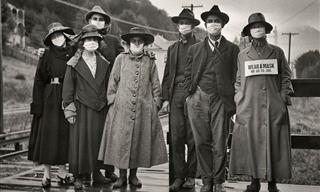
16 Absolutely Unforgettable Historical Photographs
Take a peek at these unforgettable 16 photos, and see history from a brand new perspective.
 19:11
19:11
18 Things You Probably Didn't Know About Medieval Times
Watch Medieval Literature Dr. Dorsey Armstrong answer all the important questions related to the Middle Ages.

15 Amazing Items of the Past People Found in Their Homes
The nooks and crannies of our homes may contain some really fascinating vintage items...

The Most Exciting Archaeological Discoveries of 2024
Let’s dig into the most fascinating archaeological moments of 2024.

Rare Interesting Historical Photos That are Must-See
You won’t find these rare photos in your history books.

Love Mythology? You'll Love These Informative Animations!
These informative TED-Ed videos delve into some of the world’s most popular myths and attempt to explain them in all their glory!

Listen to 7 of History's Most Famous Speeches
This article brings you the words of 7 of the most famous and impassioned speeches in history.

From Beans to Bar: How Chocolate is Made from Scratch...
Ever wondered how chocolate was made from beans to bar? Well, this collection of photographs will reveal all.

These Pictures Smuggled out of North Korea Will Shock You
Shocking photos that reveal what life really is like in North Korea.
 8:28
8:28
Was The First Famous War Photo in History Staged?
“The Valley of the Shadow of Death” is the first famous war photo in history, but journalists started questioning its genuineness. Was this famous photo staged?

Did You Know How Incredible You Were in Your Youngest Days?
Your baby self was incredible! Here are some facts to back this statement up...
 2:23
2:23
This Cat Has Broken the Record for the Loudest Purr!
This Cat Has Purred Her Way Into the Record Books!
 3:34
3:34
Inspiring: 80-Year-Old Holds Guinness Record for Planking!
Meet Annie Judis, the 80-year-old who became the oldest person to hold an abdominal plank earlier this year.

10 Questions You Always Wanted the Answer To
Let's dive into ten questions you've always wanted to ask and uncover the intriguing science behind everyday phenomena.
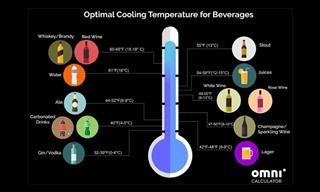
16 Helpful Charts and Guides Worth Saving
We’ll never get enough of useful charts, maps, and guides like these!
 8:07
8:07
Which of These Old Bathroom Features Do You Want Back?
These old bathroom trends have disappeared over time.

These Ancient Stories Were Lost to the Sands of Time
Even some of the world's greatest stories can be forgotten due to the passage of time. After much digging, we rounded up 10 of the best. Read on!

11 of the Most Insanely Useful Websites on the Web
Believe it or not, there are tons of sites that offer useful free stuff. Here’s a look at a few of them.

These Ancient Greek Inventions Helped Change the World
Take a look at some of important inventions and discoveries of ancient Greece that you might not be aware of.

9 Different Types of Oranges You Never Knew About
How many of these unique orange varieties have you tried?

Wish Everyone You Love a Very Happy Easter
Choose from our 10 special Easter celebration greetings cards to send to those you are thinking of at this special time of the year.
 5:02
5:02
Watch a Thai Chiropractor Fixing a Spine With a Hammer!
Thailand is a country that's known for specializing in many different kinds of massages, but would you dare be massaged by a man wielding a hammer?

How Good Are Your Reflexes? Try These Exercises with Kids
Here are 5 great and fun activities to test your reflexes.
 8:08
8:08
Dancing With Dogs is So Much Better Than Regular Dancing...
These top contestants will wiggle, jump and roll their way into your hearts!

10 Mind-Blowing History Facts You Never Knew Were True
This article is a collection of 10 surprising and little-known ancient history facts, some serious, some mysterious, and some just plain odd.
 20:44
20:44
Of the Transformative Power of Classical Music...
A fascinating TED talk by Benjamin Zander.

I Just Wanted to Let You Know: I'm Thinking of You
Are you thinking of someone right now? If so, send them a greeting card to let them know.

8 Influential Ancient Sumerian Inventions You Should Know
Find out some of the prominent and influential inventions by ancient Sumerians that helped change our world.

Rare Celebrity Pics from the '90s You Haven't Seen Before
These celebrity photos from the 1990s will make you nostalgic.

Add Extra Sunshine to Your Life With These Feel-Good Books
Need a little pick-me-up? These feel-good books are guaranteed to leave you smiling.

11 Fun Charts - You’ll Love Learning All This Useful Info!
In these helpful visual guides, we cover such important topics as distinguishing heart attack symptoms in men and women, and how to care for your indoor plants.

Language History: The Origins of 7 Common Phrases
Let's delve deep into history and travel all the way back to Ancient Rome to reveal the origins of 7 common food-related expressions in the English language.
To enable your Ad-Free Subscription, please fill the fields below
Your subscription was successful, now you can enjoy an ad-free experience!!
Note: To make sure you get no ads, please make sure to log in to your account. If you are logged in already, then refresh the page. The subscription can be cancelled at any time.


